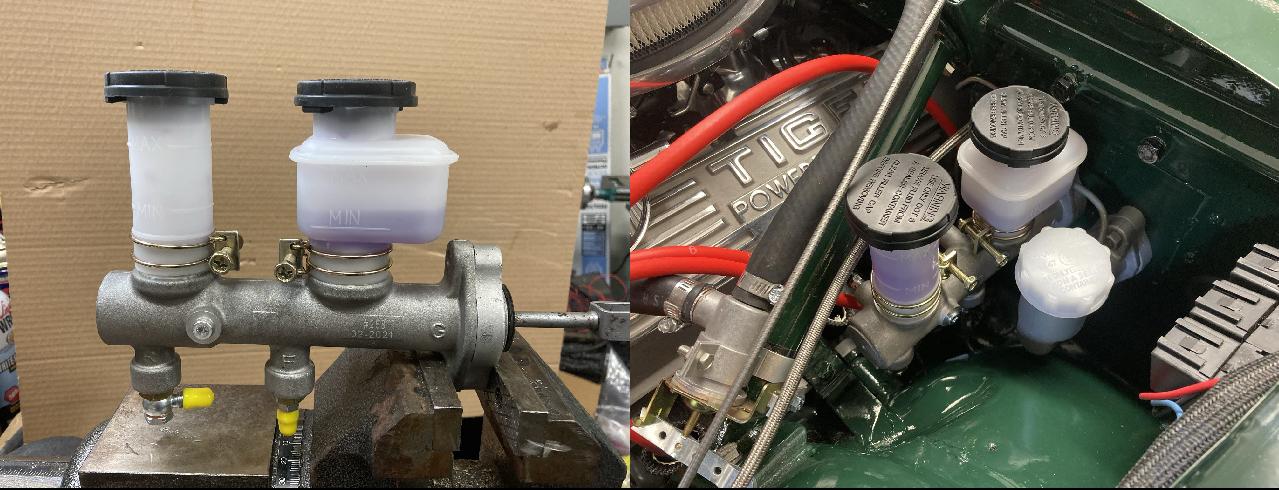Finally, some resolution. The master cylinder I was originally working with was a 7/8" 280ZX master cylinder with the bleed screws on the left side. This put them up against the clutch master, but the cylinder could still be bolted in place. I used the original Tiger brake pushrod after making the retaining washer smaller, and added the retaining washer behind the C-clip. I could not bleed the front brakes, and while I am not 100% sure, I think the additional thickness of the washer moved the piston forward enough to not work. Its a scenario wilwood describes here:
https://shop.wilwood.com/blogs/news/troubleshooting-no-fluid-pressure-at-the-rear-brakes
The second 280ZX master I purchased was a 15/16" size, and had the bleed screws on the right side. More importantly,
it arrived with a washer already between the piston and the c-clip. I substituted my own washer with the pushrod through it, and reinstalled the c-clip. Bench bled and installed on the car, I am now getting fluid and pressure to the front brakes.
Fitting this master cylinder is not fun. This is in part due to the way I made my connections, but the fittings are underneath, and that corner of the engine compartment is crowded. I was lucky in that I had just installed the steering column and had not fitted steering wheel, column shroud, or turn signal switch. It was only about 3 bolts to remove it (this time), but I hope this master cylinder is very reliable. Its not a job I would want to do often!
Here's the second master cylinder on the bench and in the car:

